In Issue #117 of Singletrack Magazine, Wil and the team tested eight pairs of platform clip-in pedals. Grab your copy to read our pick of the bunch.
Of the eight platform clip-in pedals on test, the DMR V-Twin is no doubt the most adjustable of all that we’ve tested. But whereas most clip-in pedals provide adjustability via different cleats and perhaps different height pins, the V-Twin has a novel system that allows you to adjust the body itself to get the fit dialed in for your shoes.
I’ll touch on that in a little bit. But first, a bit of background on these colourful pedals.
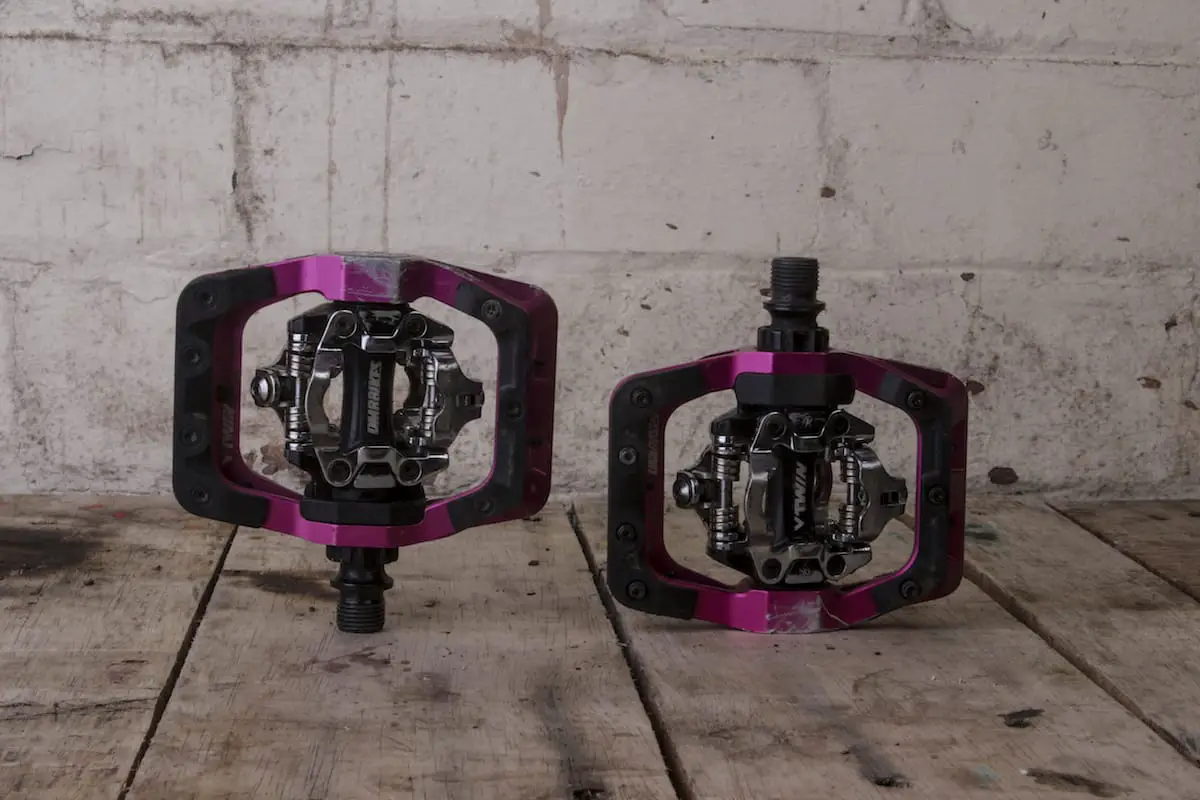
For many riders (and mountain bike journo types), DMR is the reigning king of the flat pedal world. Indeed the UK-based brand performed exceptionally well in our recent flat pedal group test, not only taking Best Budget pedal with the V8, but also Best Grip with the Vault. To say that DMR has a lot to live up to with its first clip-in pedal is a gross understatement.
The V-Twin was announced to public during the 2016 Eurobike show, following two years of development complete with intensive testing by Olly Wilkins and other members of the DMR team. Apparently even Brendog – the king of flat pedals – was involved in testing and providing feedback. Production pedals were made available in early 2017, and we’ve ben testing this lovely pink set ever since.
Latest Singletrack Merch
Buying and wearing our sustainable merch is another great way to support Singletrack
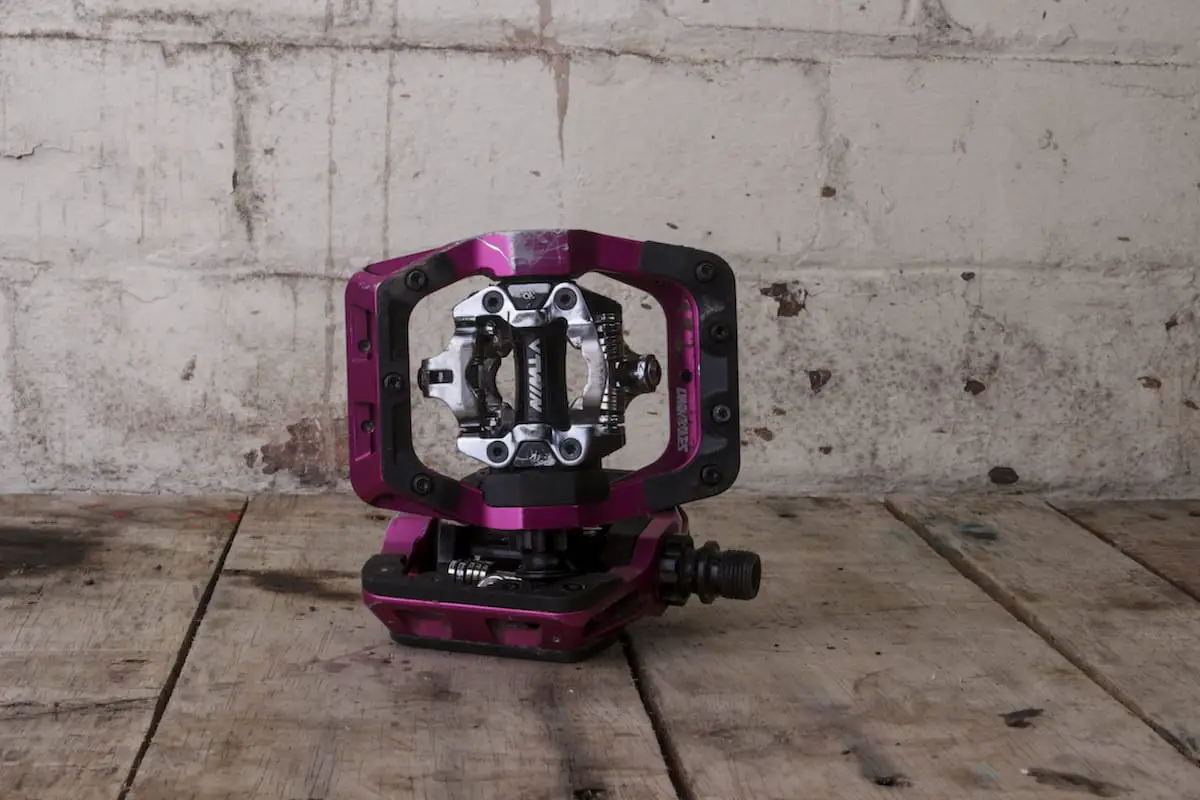
Choosing to go down the Shimano SPD-compatible route, DMR has stuck to a tried-and-tested recipe by basing its mechanism around the classic DX pedal, while giving its own unique take on things.
The use of the spring-loaded, pop-up mechanism has been made possible by the expiration of Shimano’s patent in 2015. The design makes the V-Twin an easy pedal to hook your cleat and clip into, while also providing loads of surface contact between the pedal platform and the sole of the shoe. Clipping-in will feel familiar for anyone who’s used Shimano SPD pedals before, with a positive and audible click for both engagement and release. In terms of feel, the V-Twin is a little smoother than the Funn Ripper, but not as silky smooth as the Shimano Saint.
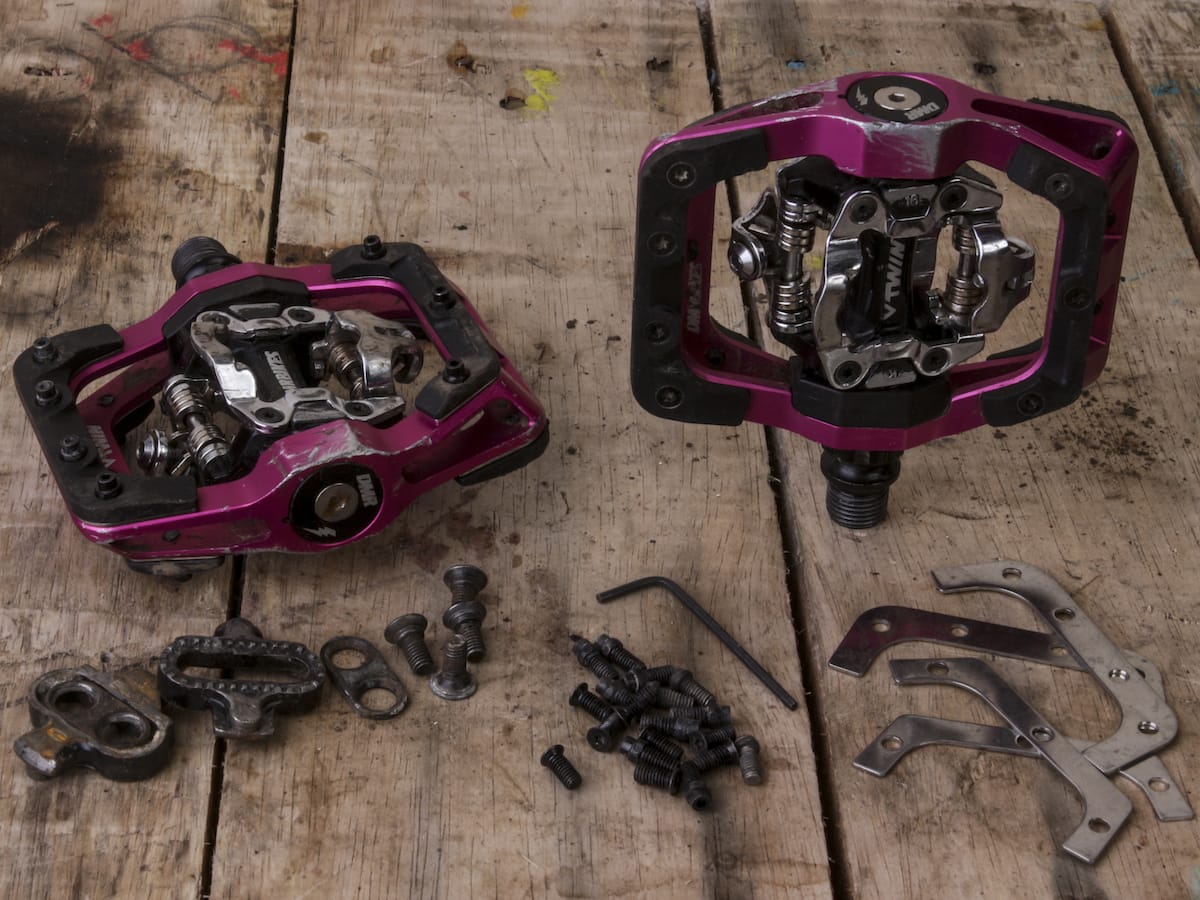
DMR includes its own cleats in the box, which feature 5° of angular float. However, we found genuine Shimano SPD cleats to offer smoother and more predictable engagement, so we used those for most of the test period. There’s a decent range of adjustment to the tension levels of the clip mechanism, and I ended up settling on about 60% to give a nice balance between security and ease of disengagement.
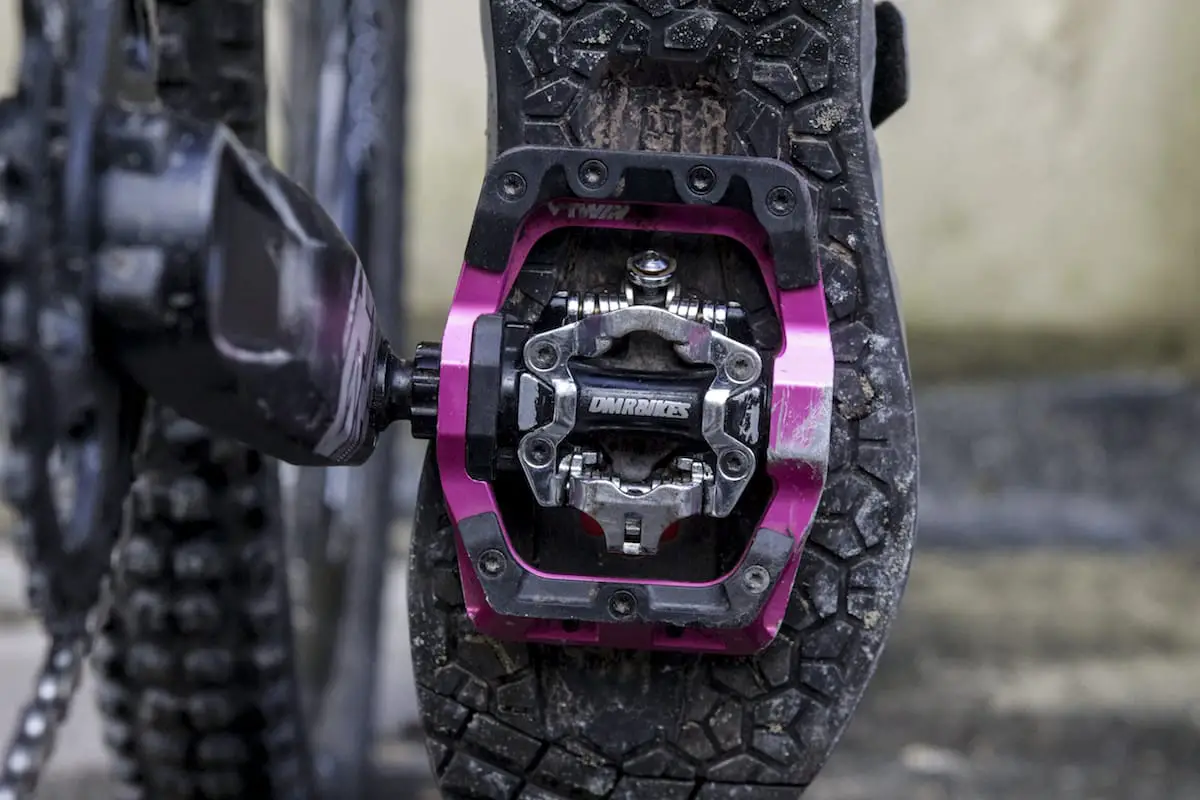
The CNC machined alloy body on the V-Twin is what provides this pedal’s stability. At 97.5mm, it has the longest platform of any pedal on test. Paired with flat skate-style soles, the platform is nice and broad, which helps to emulate a flat pedal feel when you’re running shoes with a more flexible shank (like the Giro Chamber or 5.10 Hellcat Pro). The V-Twin is also the thickest pedal on test, measuring 25mm through the middle. This puts a lot of metal underneath your foot, and while much of it depends on the bike you’re riding, the trails you’re on and your general technique, pedal strikes are more common compared to the thinner pedals on test. All of that platform adds up too – these weigh a hefty 560g for the pair (without cleats).
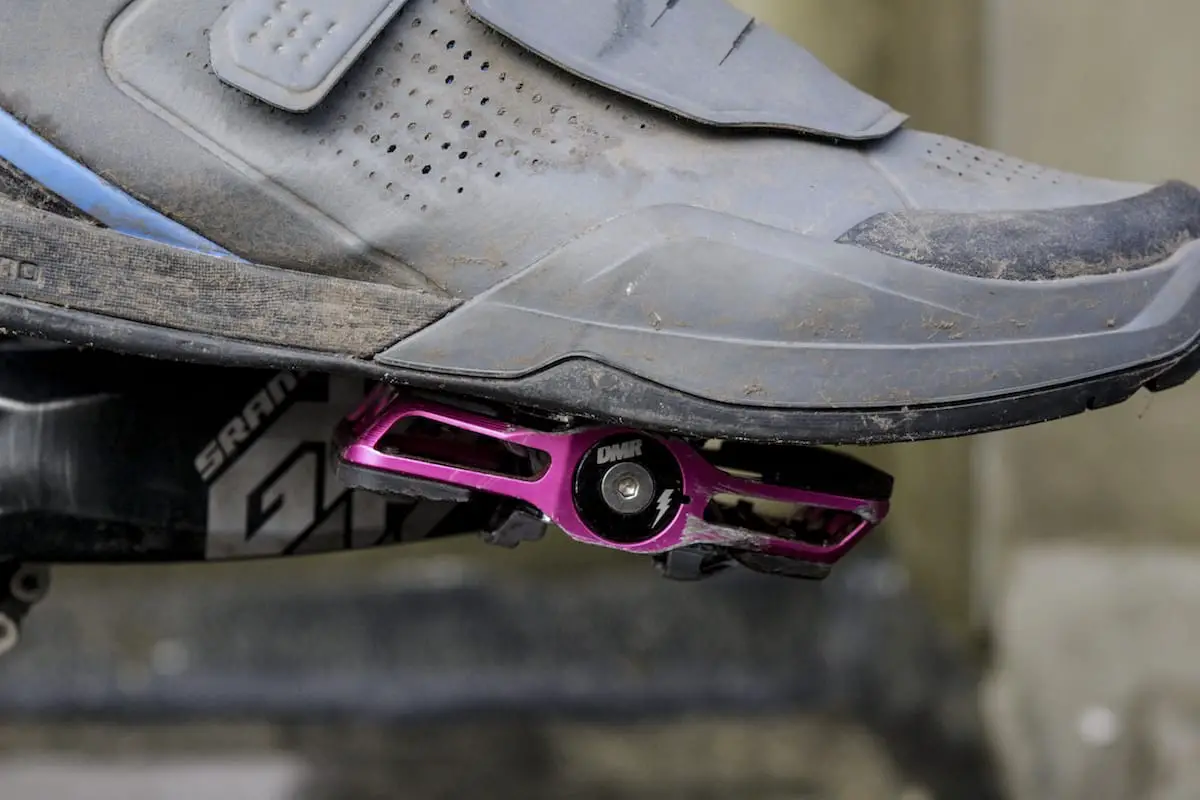
For fine-tuning the fit, DMR includes several metal shims in the box, which can be used to increase the stack height of the black nylon bumpers, which bolt to the pedal face. This helps to take up any free space between the body and the shoe sole, so you have a firm platform without any wobble. Although the added adjustability is a nice touch – and something that few (if any) other pedals have – with all the shoes we tested with (including those models mentioned above, as well as the Shimano AM9 and Northwave Outcross), there was no need to add any shims, as contact with the shoe sole was already very good. Still, it’s there if you need it.
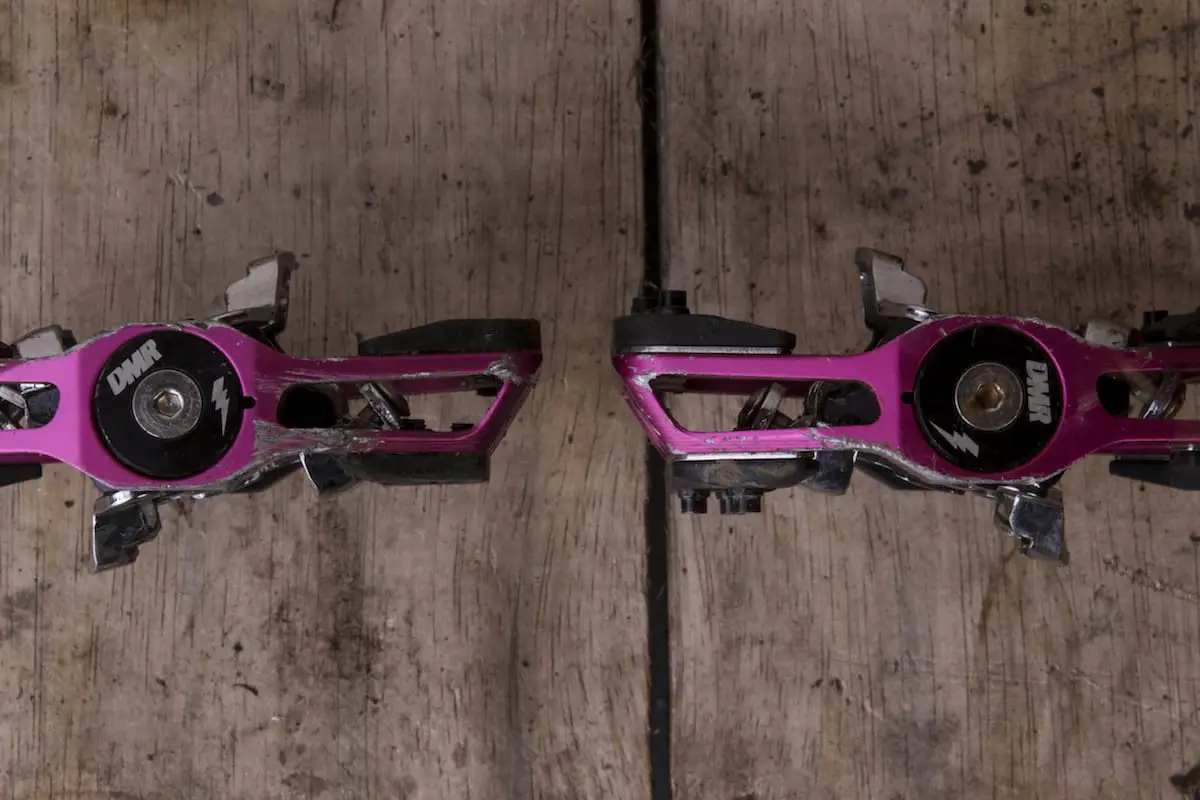
Likewise, we didn’t find the pins particularly useful. The large diameter bolt heads sit proud of the platform, and cause significant interference with shoe soles that clipping in and out became a problem with many shoes. The pins don’t have any adjustability – they’re either in or out, so we tested the pedals sans pins. With this setup, the V-Twins work fine, until it’s wet and you’re not clipped in. Without any traction pins, the smooth alloy body and Nylon bumpers don’t have a lot of texture, so they feel a bit skiddy if you need to plant a foot before getting a chance to clip back in. The flip side to this is that there are fewer edges to catch on when you do wish to unclip, so removing your foot from the pedal in the first place is nice and fluid.
One aspect to the V-Twin pedals that has become apparent after all our time with them is just how robust these pedals are. Yes, they’re on the weighty side, but they’re built with a strong cromoly spindle and put the metal where it counts. Inside is a proven DU bushing and cartridge bearing setup, which is user-serviceable via a cheap Shimano pedal tool. I opened up our test set for an inspection of the insides prior to our final photoshoot, and found nothing but clean surfaces and the stock grease, so the sealing is obviously well up to British standards. Of note is that DMR offer service kits for £10, which includes new bushings and bearings for both pedals.
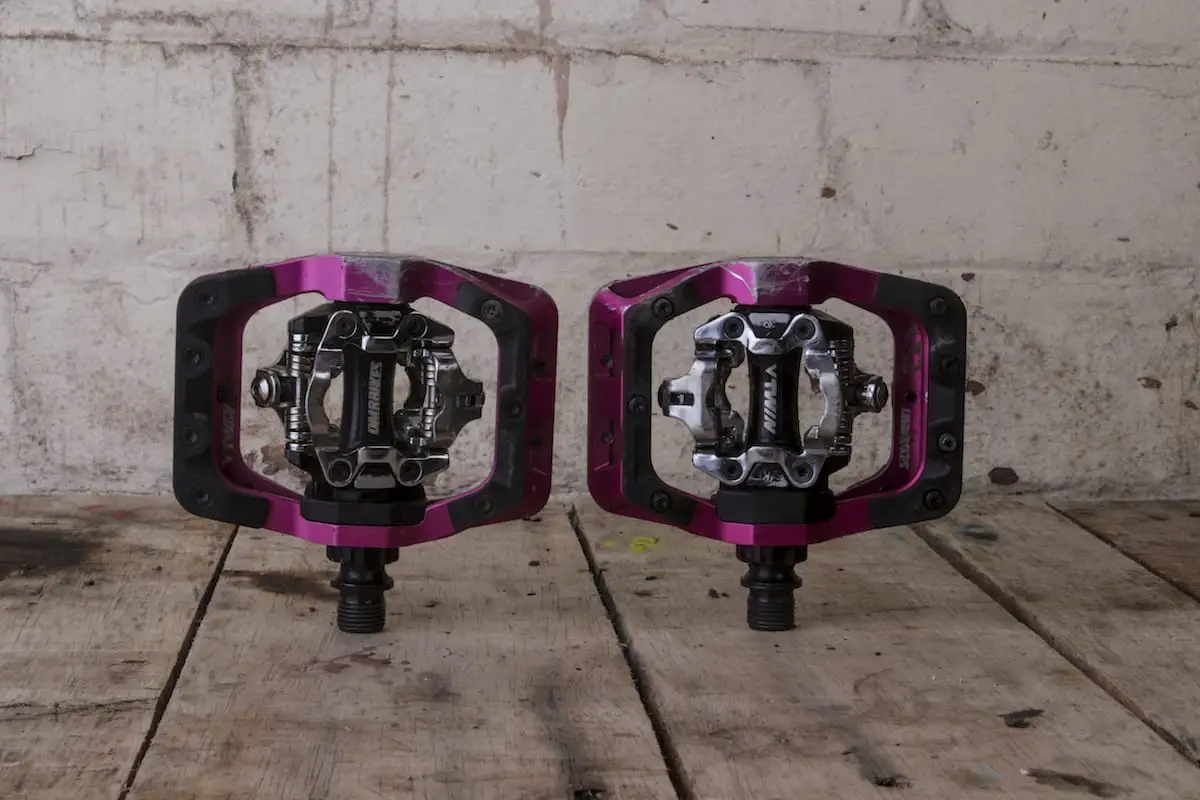
Overall
DMR has ticked off what it set out to achieve with the V-Twin pedal. It’s built a tough, robust clip-in pedal that offers loads of adjustability that makes it adaptable for different shoe types and soles. Personally I’d like to see the option of adjustable thru-pins instead of the current bolt-in ones, which would allow some fine-tuning of the traction levels. That aside, the V-Twin’s pop-up mechanism delivers easy engagement, and thanks to the supportive body, it provides an excellent feel underfoot that’ll raise the confidence levels over smaller-bodied clip-in pedals.




